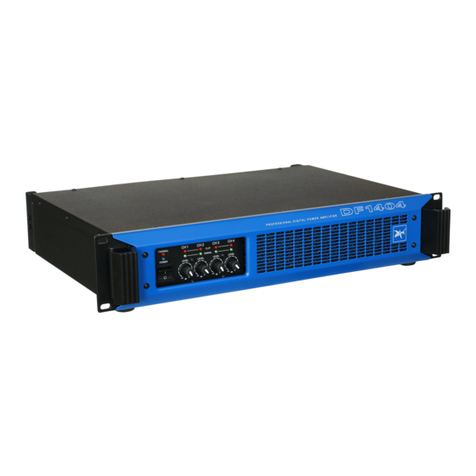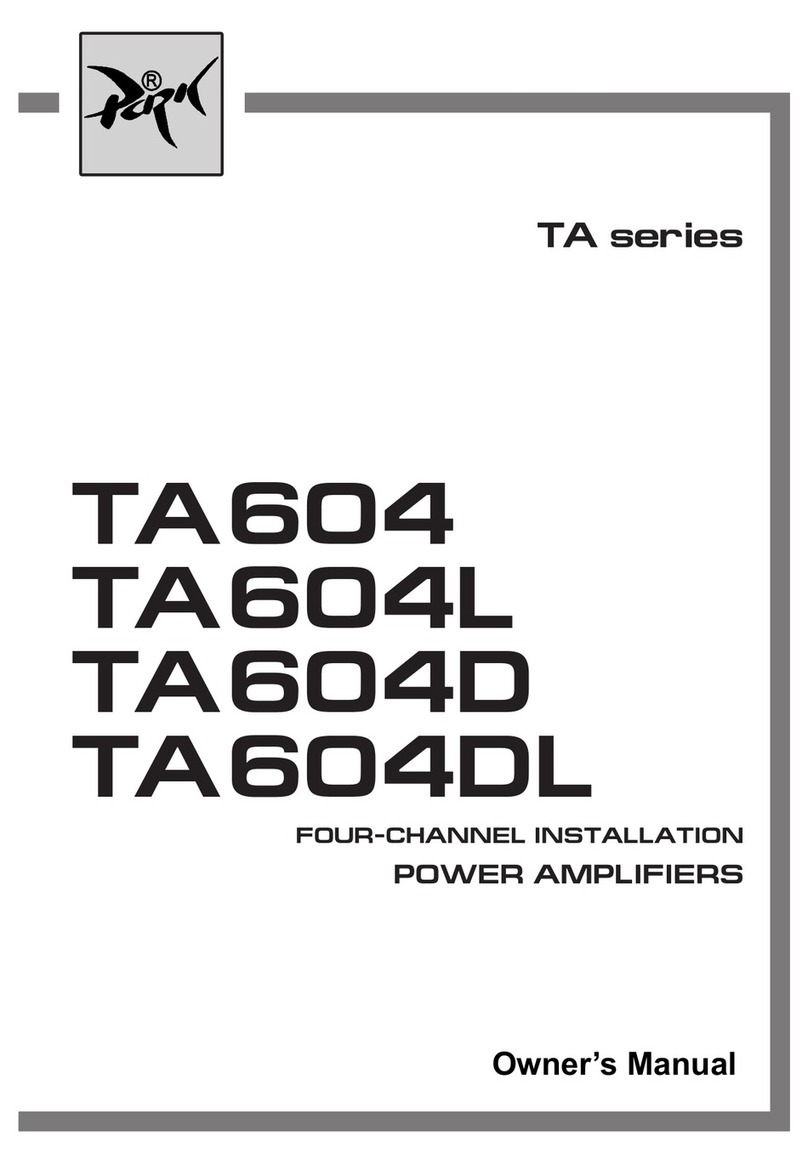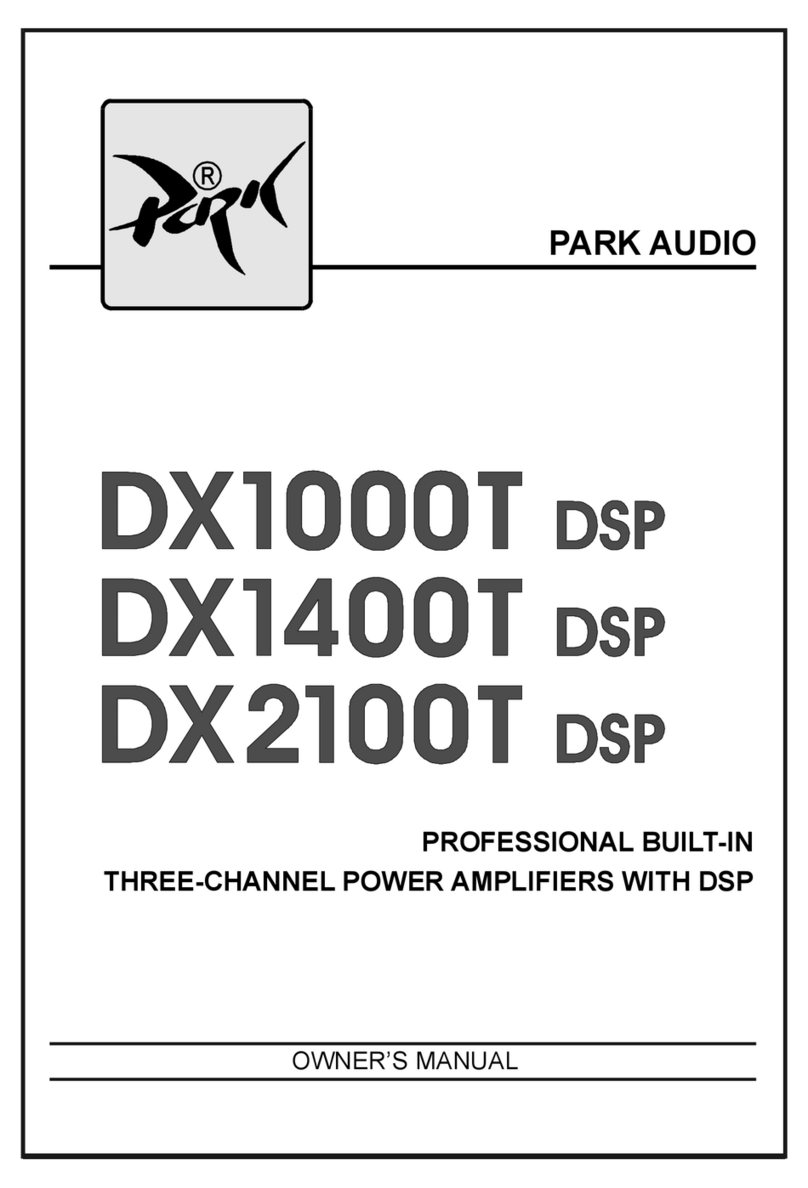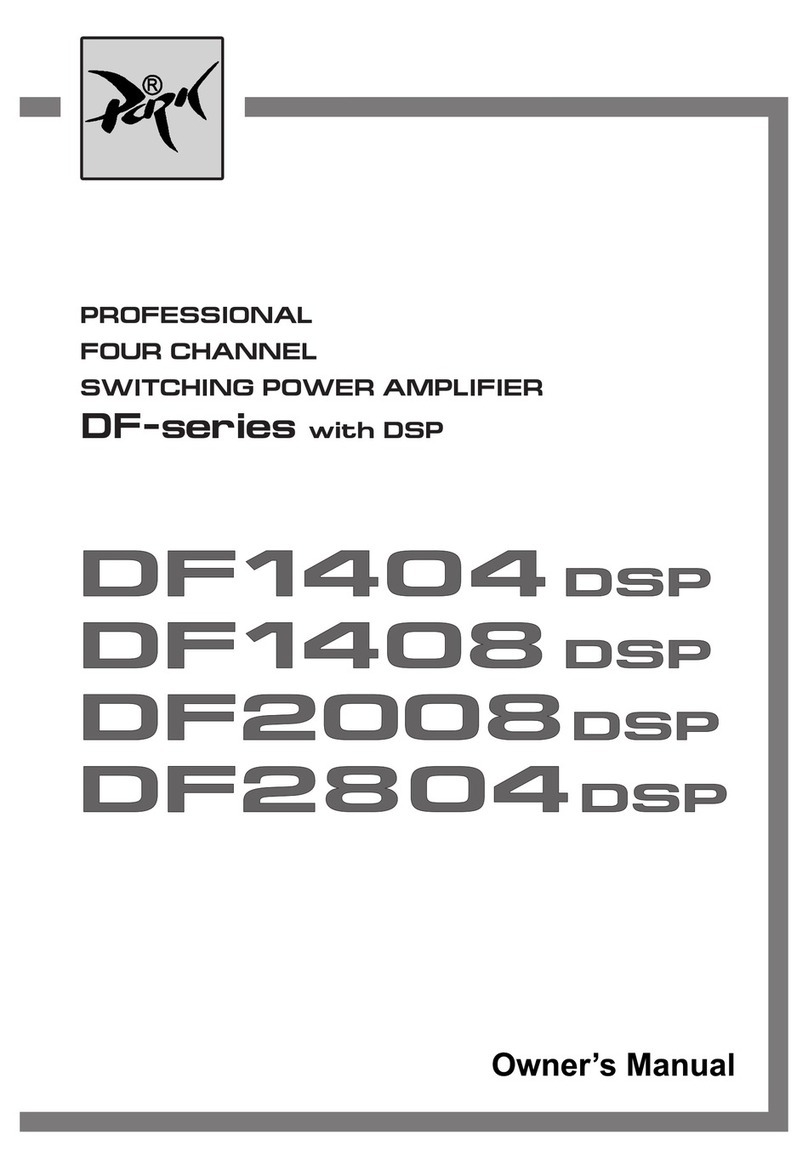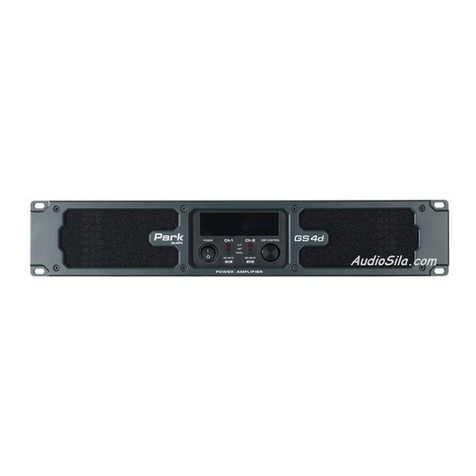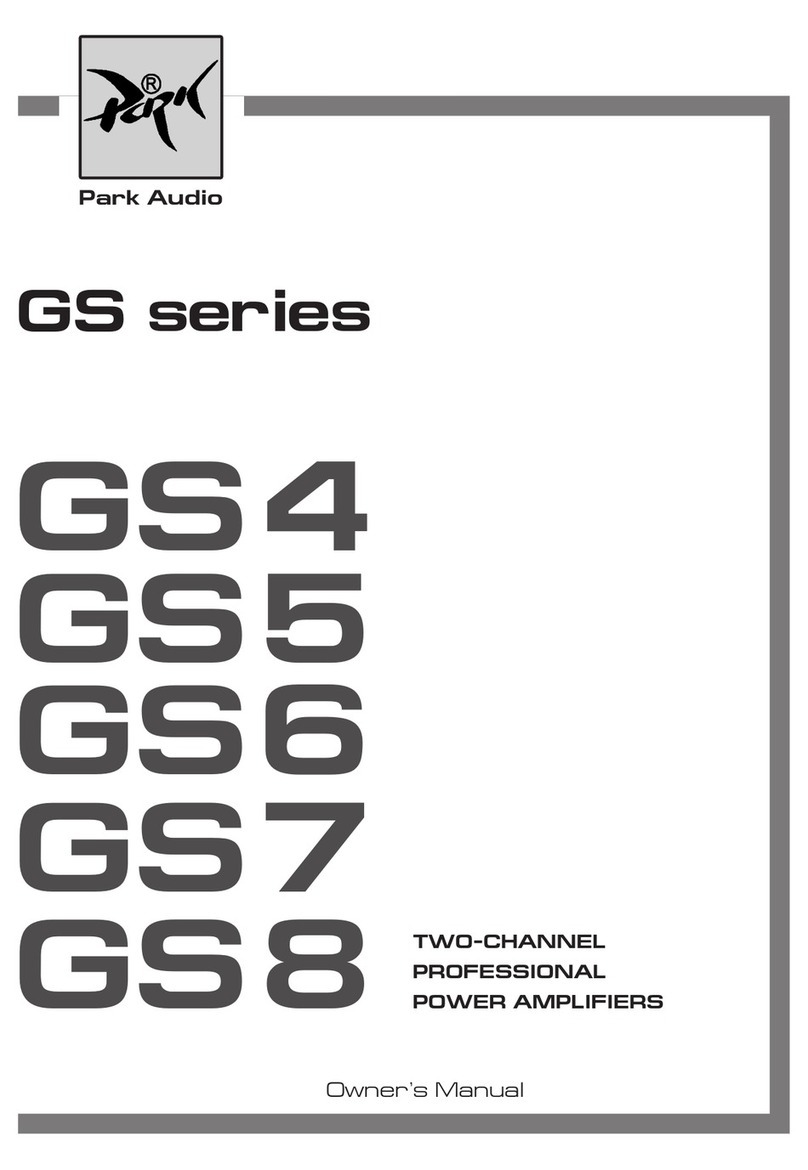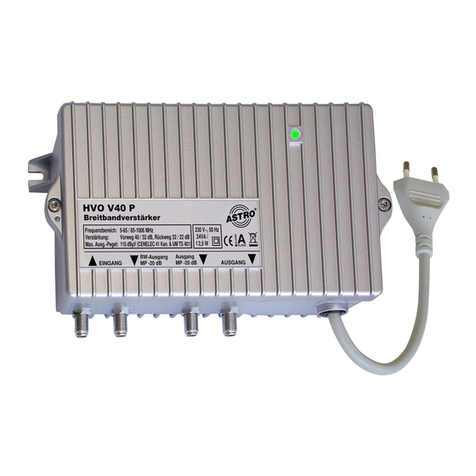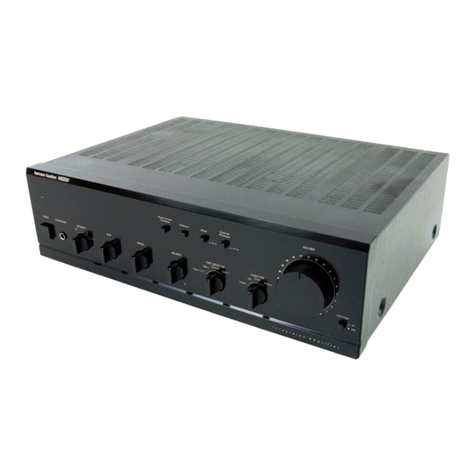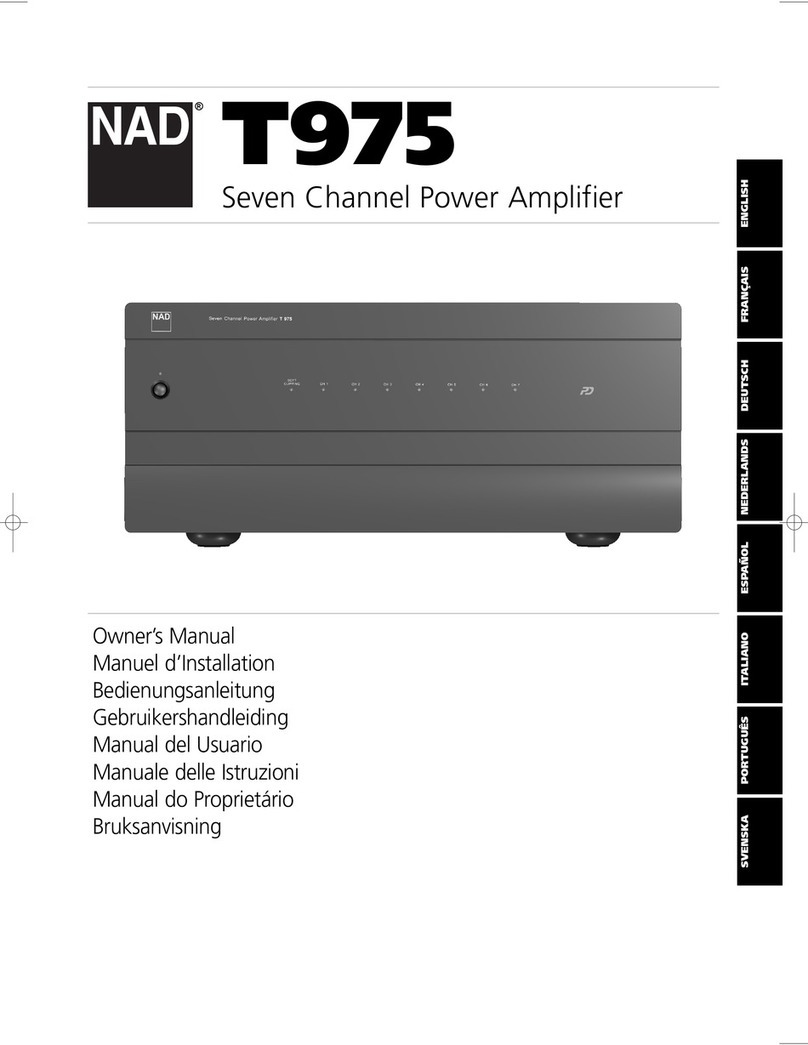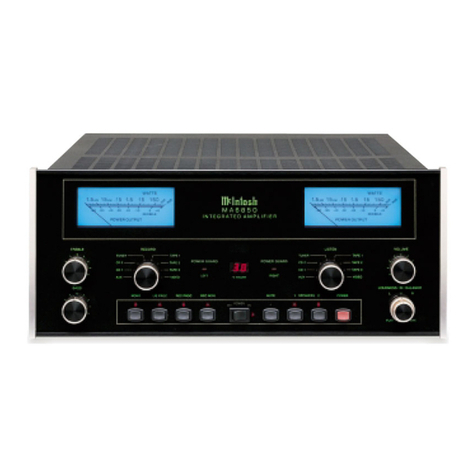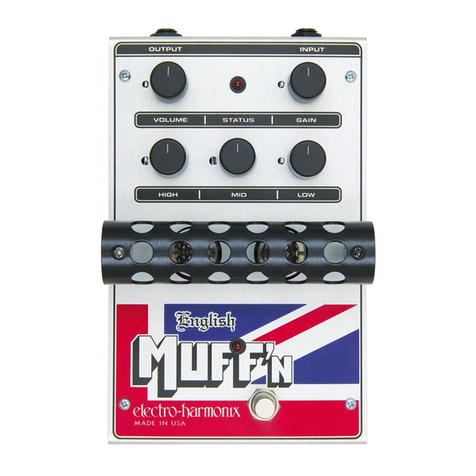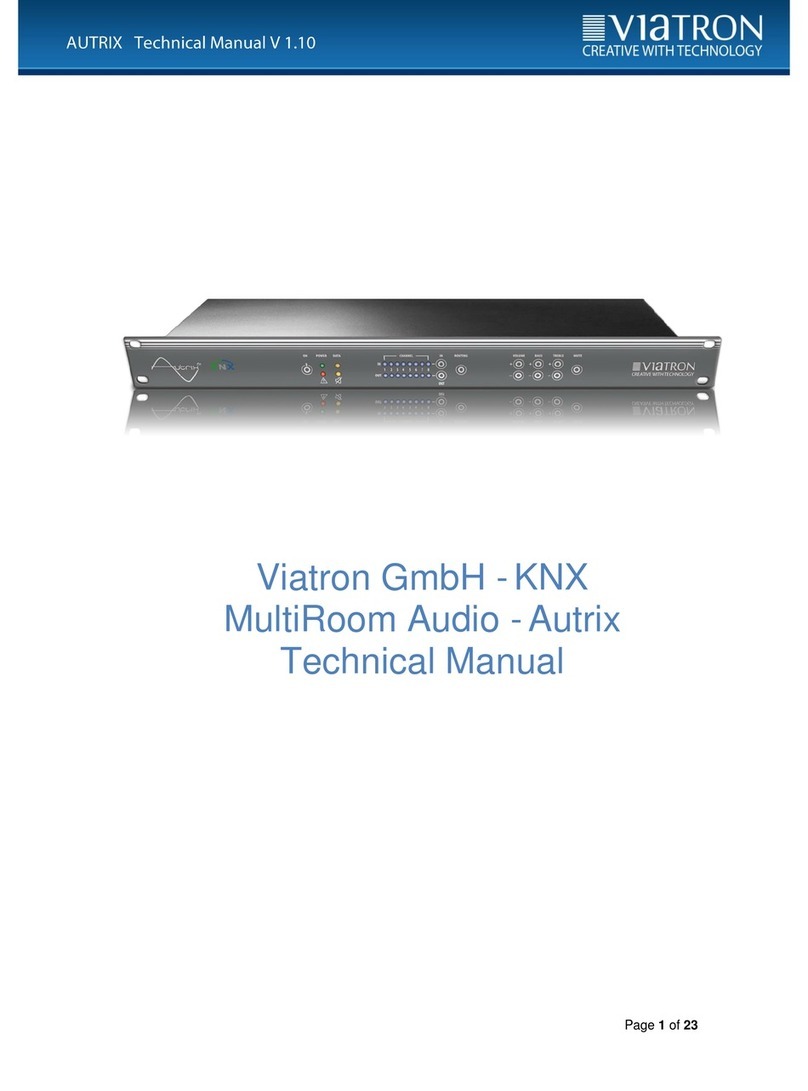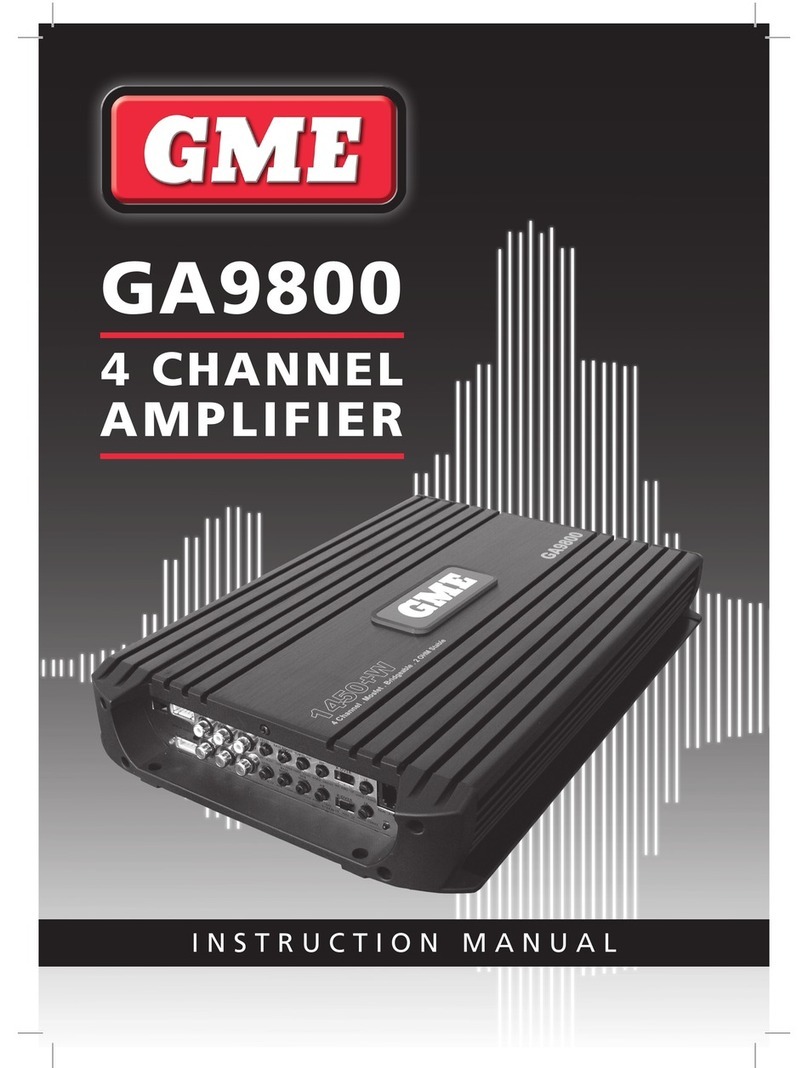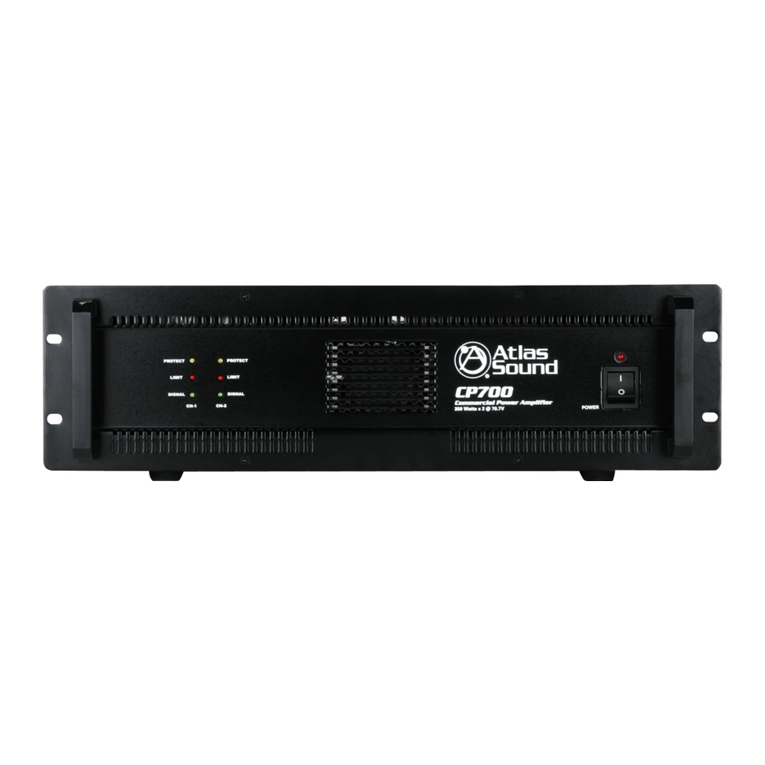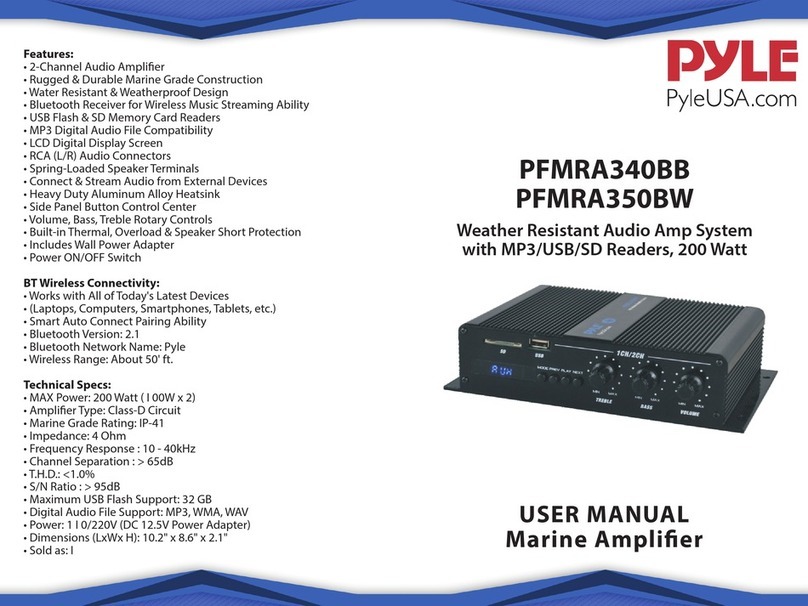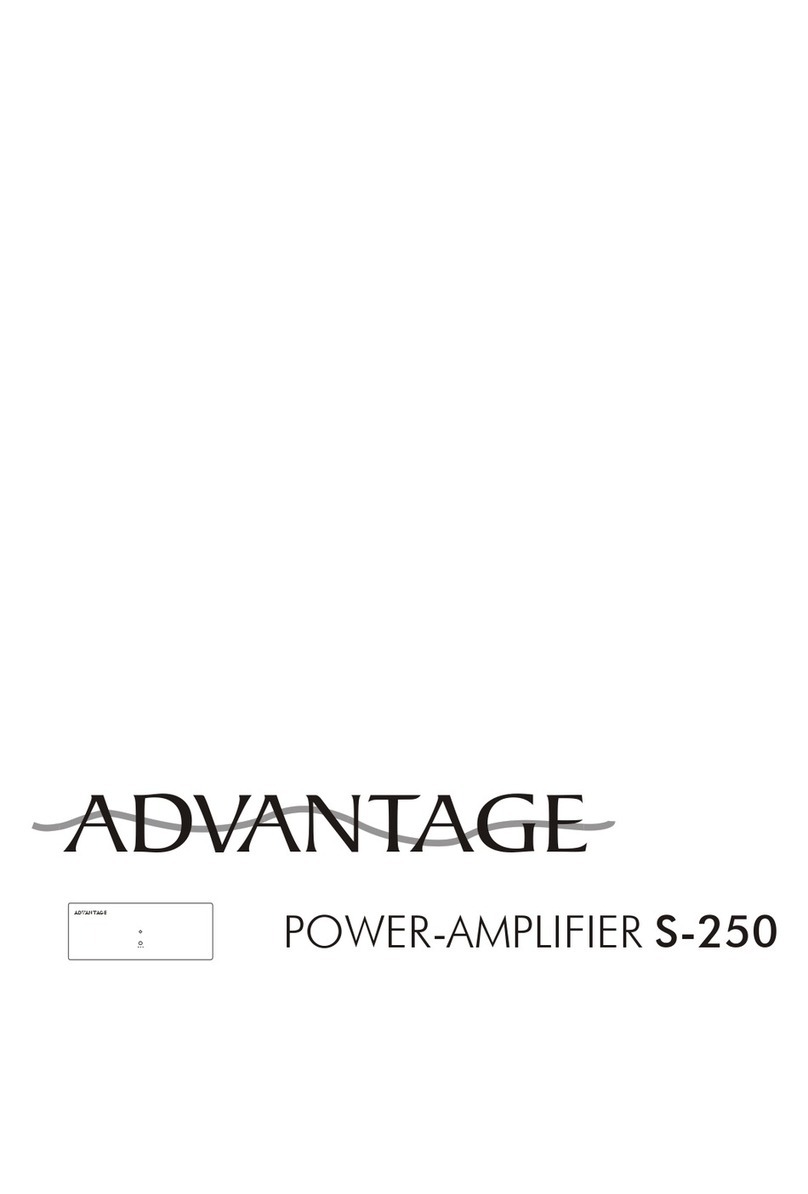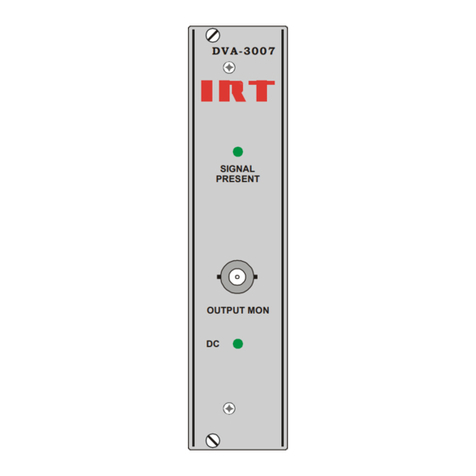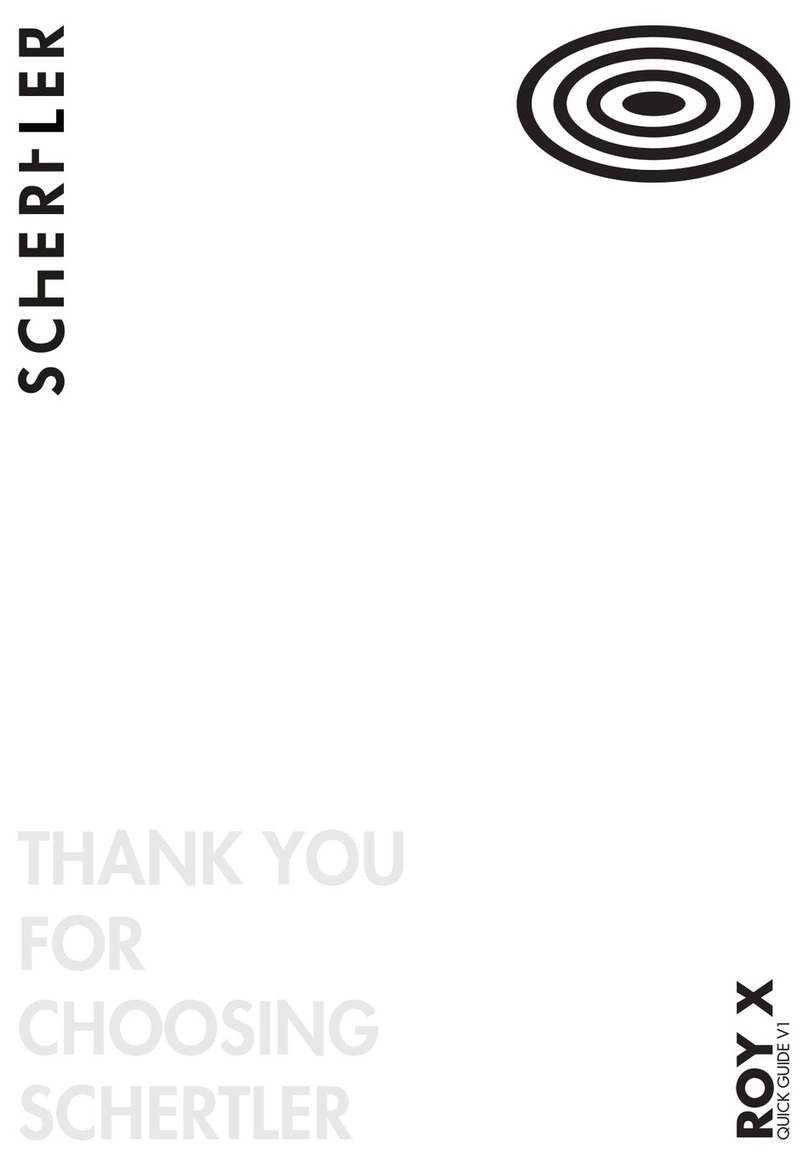FUNCTIONAL FEATURES
Output Overload and Short-Circuit Protection
Individual per each channel. Protects the output stage of the amplifier units against
short-circuiting, as well as limits the output current, when a maximum-level sine signal is
applied continuously to 2-Ohms loudspeaker.
In case short-time overload (e.g. overload, caused by a sudden drop of complex load
impedance), the fast output stage protection system limits the output current to 60A.
In case of long-term overload (>0.5sec), the slow protection system limits the output
current to 40A.
In case of a short circuit, the protection system momentarily blocks the output of the
amplifier. The processor periodically tries to turn on the amplifier. If the short-circuit persists
for a long time, test attempts are made less often.
The protective system does not switch the amplifier off, so it resumes its unattended
operation after the short-circuiting conditions are gone.
Built-in to each channel microprocessor ensures safe operation.
DC Output Protection
Independent for each pair of channel. Prevents DC damage to loudspeakers.
The amplifier’s schematics precludes transit of any clicks or noise during the power-
on/off transition process.
Protection of loudspeakers against DC damage is ensured for each pair of channel by
individual power supply units which are disabled in the event of output DC voltage or any
powerful LF fluctuations. In case the protection system becomes active on all channels and
both power supply units become disabled, all indicators go off.
The amplifier can be restarted with the POWER toggle switch, by way of turning the
amplifier off and turning it on, about 2 minutes later again.
Thermal Protection
Individual for each channel. Protects the amplifier’s output stage against
overheating.
In case the temperature of the output stage transistors rises to 80°С, the CLIP LED of
the corresponding channel lights up. At the same time, the thermal protection system will
gradually reduce the signal level as the temperature increases. When the output stage
reaches 85°C, the thermal protection system will block the input and output stage of the
corresponding amplifier channel. After the temperature drops to 70°С , the amplifier
automatically resumes operation.
Soft Start
Reduces the power-on inrush current.
The soft start system is provided to reduce inrush current to the amplifier and to
minimize the noise contributed by the amplifier to the power mains during the poweron
process.
Soft Signal Start
Ensures smooth power-on sound signal rise.
During the power-on process, this feature ensures smooth gain from zero to the
maximum level to provide for a smooth rise of the sound level emitted from the
loudspeakers.
5
